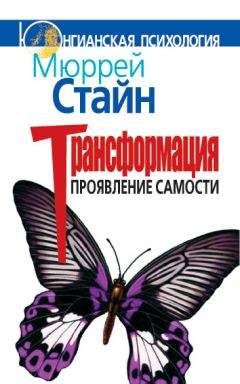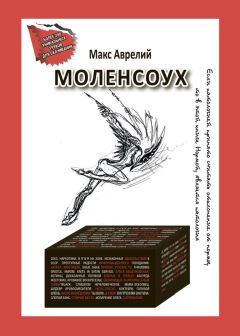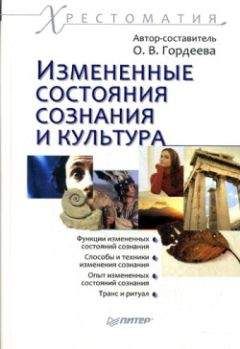Мюррей Стайн - Принцип индивидуации. О развитии человеческого сознания
Как юнгианские аналитики, мы, каждый из нас, осознаем сомнения и тревоги, выпадающие на долю человека, находящегося в процессе индивидуации. Кажущийся хаос и огромная неопределенность сопровождают психологическое путешествие, толкающее к новой интеграции и к большему сознанию. Принцип индивидуации, применимый к международным ценностям, призывает к диалогу между противоположными и противоречащими друг другу позициями, и в этом процессе есть полоса сомнений и периодов отчаяния. Поскольку четкая и традиционная позиция релятивизируется, культурная идентичность дестабилизируется. В международных делах нет никакой контролирующей власти, ответственной за этот процесс, его центр виртуален и невидим.
Процесс индивидуации требует поставить под вопрос самые дорогие, взлелеянные в культуре, не ставящиеся под сомнение факты и бережно сохраняемые убеждения. Он означает способность человека отторгнуть более ранние отождествления и стать открытым для исследования неизвестного и зачастую противоположного (separatio на внутреннем уровне). Кроме того, необходимы открытое отношение к «чуждому другому» и желание вступить в диалог с этим чужеродным элементом (coniunctio). Это призывает к интеграции чужеродного элемента в себе – вытесненного, теневого, пугающего и забытого.
Политика, базирующаяся на модели индивидуации, должна включать в себя различия без их демонизации и осуждения как плохих, когда речь идет попросту о разнице. Ее цель – одновременно умение различать и интеграция, что означает удерживание того, что уже определено и присутствует в настоящем, и присоединение к этому других, отличных элементов для формирования нового единства под стягом нового символа.
В этих попытках Северная и Южная Америки нуждаются друг в друге. Из диалектической игры между этими двумя культурами вырастает движение по направлению к большей культурной целостности для обеих сторон.
ЛИТЕРАТУРА
Alcoholics Anonymous. 1976. 3rd ed. New York: Alcoholics Anonymous World Services.
Alles G., ed. 1996. Rudolf Otto: Autobiographical and social essays. Berlin and New York: Mouton de Gruyter.
Alles G. 2001. Toward a genealogy of the holy: Rudolf Otto and the apologetics of religion, in Journal of the American Academy of Religion 69 (2): 323–342.
Files G. 2002. The science of religions in a fascist state: Rudolf Otto and Jacob Wilhelm Hauer during the Third Reich. In Religion 32: 177–204.. Anderson R., and Cissna K, 1997. The Martin Buber-Carl Rogers dialogue.
Albany, NY: State University of New York Press. Athanassakis, Apostolos, trans. 1976. The Homeric Hymns. Baltimore and London: The Johns Hopkins University Press.
Berger P. 1977. New York City 1976: A signal of transcendence. In Facing up to modernity: Excursions in society, politics, and religion. New York: Basic Books.
Brown N.O. 1947/1969. Hermes the thief. New York: Vintage Books.
Buber, M. 1923/2004. I and Thou. Trans. Ronald Gregor Smith. London and New York: Continuum.
Burkert W. 1979/1982. Structure and history in Greek mythology and ritual. University of California Press.
Burkert W. 1985. Berkeley: Greek religion. Trans. John Raffan. Cambridge, MA: Harvard University Press.
Burkert W. 1996. Creation of the sacred: Tracks of biology in early religions. Cambridge, MA and London: Harvard University Press.
Burleson В. 2005. Jung in Africa. New York and London: Continuum.
EdingerE. 1985. Anatomy of the psyche: Alchemical symbolism in psychotherapy. LaSalle IL: Open Court.
Ellenberger H. 1993. Beyond the unconscious. Princeton, NJ: Princeton University Press.
Fordham M. 1970. Children as individuals. New York: G.P Putnam's Sons.
Giegerich W. 2004. The end of meaning and the birth of man. In Journal of Jungian Theory and Practice 6 (1): 67–83.
Haas R. 2005. The opportunity. New York: Public Affairs.
Hakl H. 2001. Der verborgene Geist von Eranos: Unbekannte Begegnungen von Wissenschaft und Esoterik. Bretten: Scienta Nova, Verlag neue Wissenschaft.
HillmanJ. 1964/1975. Betrayal. In Loose ends. Zurich: Spring Publications. Holy Bible, New Revised Standard Version.
Hornblower S., and A. Spamforth. The Oxford classical dictionary. 3rd ed.Oxford and New York: Oxford University Press, 1996.
Jacoby, M. 1990. Individuation and narcisissm. London and New York: Routledge.
Jajfe A. 1972/1989. The creative phases in Jung's life. In From the life and work of CG. Jung. Einsiedeln: Daimon Verlag.
Jung C.G. 1912/1916. Wandlungen und Symbole der Libido. Trans. Beatrice M. Hinkle (1916). In Psychology of the unconscious. New York: Dodd, Mead and Co.
Jung CG.1916/1989. Septem sermones ad mortuos. In Memories, Dreams, Reflections. New York: Vintage Books.1916/1967.
Jung C.G. Uber das Unbewusste und seine Inhalte, translated as'The structure of the unconscious.» In Collected Works 7. Princeton, NJ: Princeton University Press.
Jung C.G. 1916/1969. Die Transzendente Funktion, translated as «The transcendent function.» In Collected Works 8. Princeton, NJ: Princeton University Press.
Jung C.G. 1921/1971. Psychologische Typen, translated as Psychological types. Collected Works 6. Princeton, NJ: Princeton University Press.
Jung C.G. 1925/1989. Analytical Psychology: Notes of the seminar given in 1925. Ed. William McGuire. Princeton, NJ: Princeton University Press.
Jung C.G. 1933/1969. Brother Klaus. In Collected Works 11. Princeton,NJ: Princeton University Press.
JungC.G. 1934/1969. A review of the complex theory. In Collected Works 8. Princeton, NJ: Princeton University Press.
Jung C.G. 1934–1939/1988. Nietzsche's Zarathustra. Ed. James LJarrett. Princeton, NJ: Princeton University Press.
Jung C.G. 1934/1950/1971. A study in the process of individuation. In CollectedWorks 9i. Princeton, NJ: Princeton University Press.
Jung C.G. 1935/1966. The relations between the ego and the unconscious. In Collected Works 7. Princeton, NJ: Princeton University Press.
Jung, C.G. 1936/1937/1960. Psychological factors determining human behavior. In Collected Works 8. Princeton, NJ: Princeton University Press.
Jung C.G. 1936/1964. Wotan. In Collected Works 10. Princeton, NJ: Princeton University Press.
Jung C.G. 1937/1969. Psychology and religion. In Collected Works 11. Princeton, NJ: Princeton University Press.
Jung C.G. 1942/1967. The spirit Mercurius. In Collected Works 13. Princeton, NJ: Princeton University Press.
Jung C.G.. 1944/1970. Psychology and alchemy. In Collected Works 12. Princeton, NJ: Princeton University Press.
Jung C.G. 1946/1954/1960. On the nature of the psyche. In Collected Works 8. Princeton, NJ: Princeton University Press.
Jung C.G. 1946/1966. On the psychology of the transference. In Collected Works 16. Princeton, NJ: Princeton University Press.
Jung C.G. 1951/1968. Aion. Collected Works 9i. Princeton, NJ: Princeton University Press.
Jung C.G. 1952/1960. Synchronicity: An acausal connecting principle. In Collected Works 8. Princeton, NJ: Princeton University Press.
Jung C.G. 1952/1969. Answer to Job. In Collected Works 11. Princeton, NJ: Princeton University Press.
Jung C.G. 1954/1960. On the nature of the psyche. In Collected Works 8.Princeton, NJ: Princeton University Press.
Jung C.G. 1954/1969. Das Wandlungssymbol in der Messe, translated as «Transformation symbolism in the Mass.» In Collected Works 11. Princeton, NJ: Princeton University Press.
Jung C.G. 1955-6/1963. Mysterium coniunctionis. Collected Works 14. Princeton, NJ: Princeton University Press..
Jung С G. Letters. Selected and edited by Gerhard Adler in collaboration with Aniela Jaffe. 2 vols. Princeton, NJ: Princeton University Press. 1973 Forthcoming. The red book. Ed. Sonu Shamdasani.
KalshedD. 1996. The inner world of trauma. London and New York: Routledge.
Kerenyi K. 1944/1976/1996. Hermes, guide of souls. Woodstock, CT: Spring Publications.
KnoxJ. 2003. Archetype, attachment, analysis. Hove and New York: Rout-ledge, hammers, A. 1994. In God's shadow: The collaboration of Victor White and C.G. Jung. New York: Paulist Press.
Lattimore R., trans. 1951. The Iliad. Chicago and London: University of Chicago Press.
Lattimore R., trans. 1965. The Odyssey. New York: Harper & Row.
Liddell H.G., and Scott Robert. 1958. Greek-English lexicon. New York: Follett Publishing Co.
MillerJ.C. 2004. The transcendent function. Albany: SUNY Press.
Neumann E. 1954. The origins and history of consciousness. Princeton, NJ: Princeton University Press.
Neumann E1955. The Great Mother. Princeton, NJ: Princeton University Press.
Nilsson M.P. 1940/1978. Greek folk religion. Philadelphia: University of Pennsylvania Press.
Otto R. 1917. Das Heilige. Translated by John W. Harvey (1923; 2nd ed.1950) as The idea of the holy. Oxford: Oxford University Press.
Otto R. 1962. Mysticism East and West: A comparative analysis of the nature of mysticism. New York: Collier Books.
Otto W. 1954. The Homeric gods: The spiritual significance of Greek religion. Trans. Moses Hadas. New York: Pantheon.
Roscher W.H. 1886–1890. Ausfuhrliches Lexikon der Griechischen und Romischen Mythologie. Leipzig: Teubner Verlag.
Samuels, A., Hotter, В., andF. Plaut. 1986. A critical dictionary of Jungian analysis. London: Routledge & Kegan Paul.
Samuels A. 1993.The political psyche. London and New York: Routledge.
Samuels A. 2001.Politics on the couch: Citizenship and the internal life. New York: Karnac Books.
Shamdasani S. 1996. Introduction. The psychology of kundalini yoga: Notes ofthe seminar given in 1932 by C.G.Jung. Princeton, NJ: Princeton University Press.
Shamdasani S. 2004. Jung and the making of modern psychology. Cambridge: Cambridge University Press.
Shelley P.B. 1901. The complete works of Shelley. Boston: Houghton Mifflin.
Stein M. 1984. In midlife. Dallas: Spring Publications.
Stein M. 1985. Jung's treatment of Christianity. Wilmette, IL: Chiron Publications.
Stein M. 1998. Jung's map of the soul. Chicago: Open Court.
Stein M.1998. Transformation—emergence of the self. College Station, TX: Texas A&M University Press.
Stein M.2005. The influence of Chinese thought on Jung's psychological theory. In The Journal of Analytical Psychology 50 (2): 209–222.
Stein M.2005. The role of Victor White in C.G.Jung's writings. The Guild of Pastoral Psychology, Guild Lecture No. 285.
Stein M.2005. The work of individuation. In Journal of Jungian Theory and Practice 7 (2).
Stern P. 1976. C.G. Jung: The haunted prophet. New York: G. Braziller.
Turner V. 1987. Betwixt and between. In Betwixt and between, edited by L. Mahdi. LaSalle, IL: Open Court.
Urban E. 2005.Fordham, Jung and the self: Are-examination of Fordham's contribution to Jung's conceptualization of the self. In Journal of Analytical Psychology 50 (5): 571–594.
Von Franz, M. – L. 1964. The process of individuation. In Man and his symbols. Garden City, NY: Doubleday & Co.
Von Franz M. – L. 1970. Puer aeternus. Zurich: Spring Publications.
VonFranzM. – L. 1977. Individuation in fairy tales. Zurich: Spring Publications.
Von Franz M. – L. 1990. Projection and recollection in Jungian psychology. LaSalle, IL: Open Court.
Von Franz M. – L. 2004. Conversations on Aion (with Claude Drey). In Lectures on Jung's Aion, by B. Hannah and M. – L von Franz. Wilmette, IL: Chiron Publications.
Winnicott D.W. 1971/1980. Playing and reality. New York: Penguin Books.
Wolff T. 1959. Gedanken zum Individuationsprozess der Frau. In Studien zu C.G.Jungs Psychologie, edited by C.A. Meier. Zurich: Rhein-Verlag.
Zipes J., trans. 1987The complete fairy tales of the Brothers Grimm. Toronto and New York: Bantam books.
Примечания
1
Принцип индивидуации (лат.).
2
В «Воспоминаниях, снах, размышлениях» Юнг пишет о понимании, пришедшем к нему во время путешествия в Африку: «В этот момент космологический смысл сознания открылся мне во всей полноте. «Quod natura relinquit imperfectum, ars perficit» (Что природа оставляет несовершенным, довершает искусство (лат.), – говорили алхимики. Невидимым актом творения человек придает миру завершенность, делая существование его объективным» (New York: Vintage Books, 1989, p. 255–256). – Рус. пер.: Юнг К.Г. Воспоминания, сны, размышления. Киев: Air Land, 1994. С. 253 (далее – ВСР).




